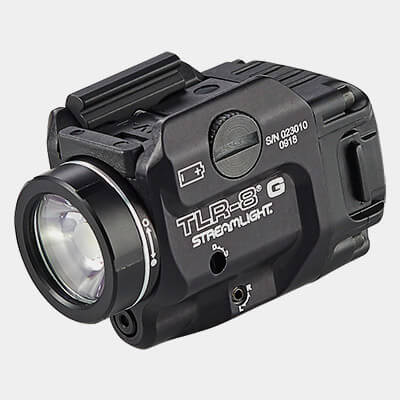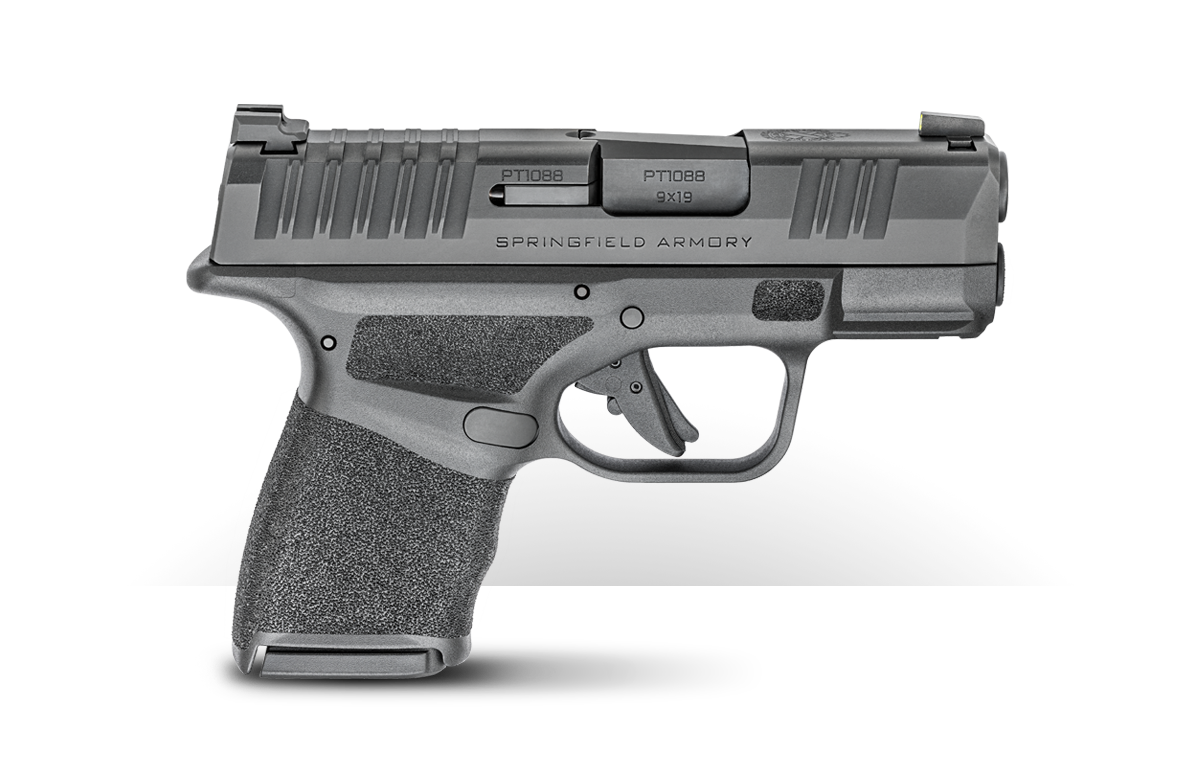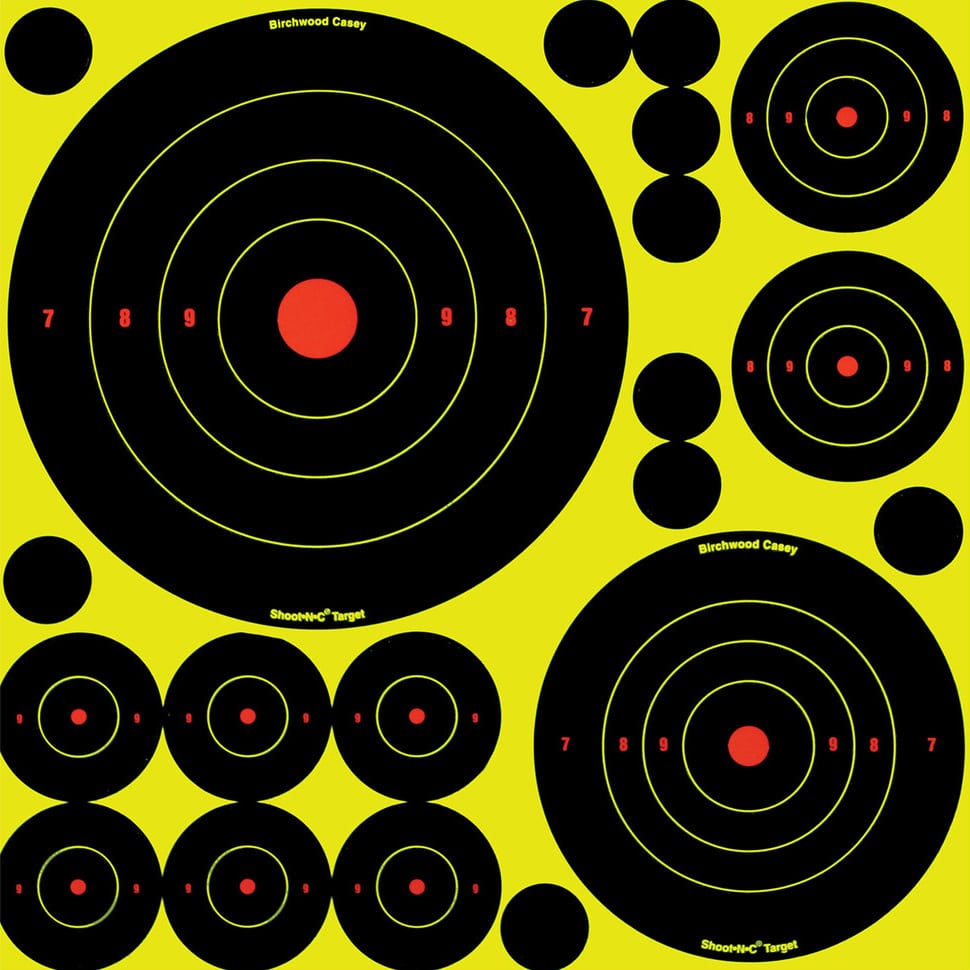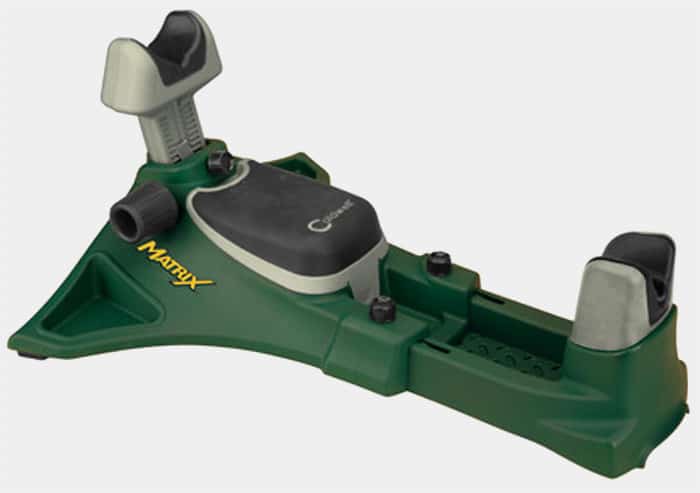Streamlight TLR-8 G Review: Weapon Light and Laser
March 12th, 2023
7 minute read
Frankly, the earliest weapon-mounted lights (WML) and laser sights were far too bulky to fit on a discreetly concealed handgun. That has long been over. Consider the recently introduced Streamlight TLR-8 G-Sub, which incorporates both features. Extremely compact at about 2½” long, it also weighs less than 3 oz.
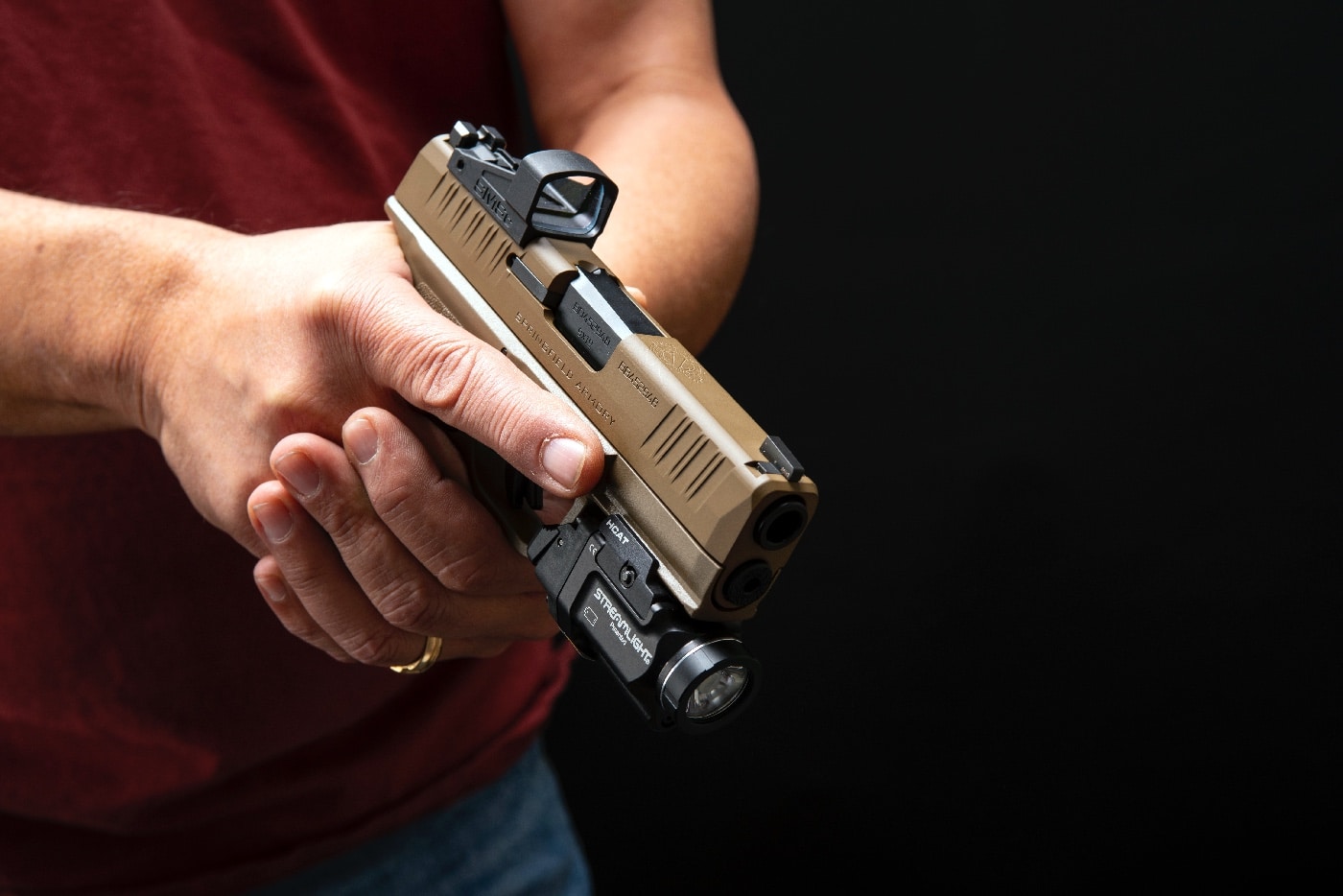
I recently received one of these to test out, and Springfield Armory was kind enough to furnish a 9mm Hellcat Pro with a Shield SMSc red dot optic as well as fixed conventional night sights as the vehicle for the test. The TLR-8 unit was marked “HCAT,” specific for the Hellcat pistol. The “G-Sub” designation stands for the Green color of the laser sighting beam, and the subcompact size of the unit.
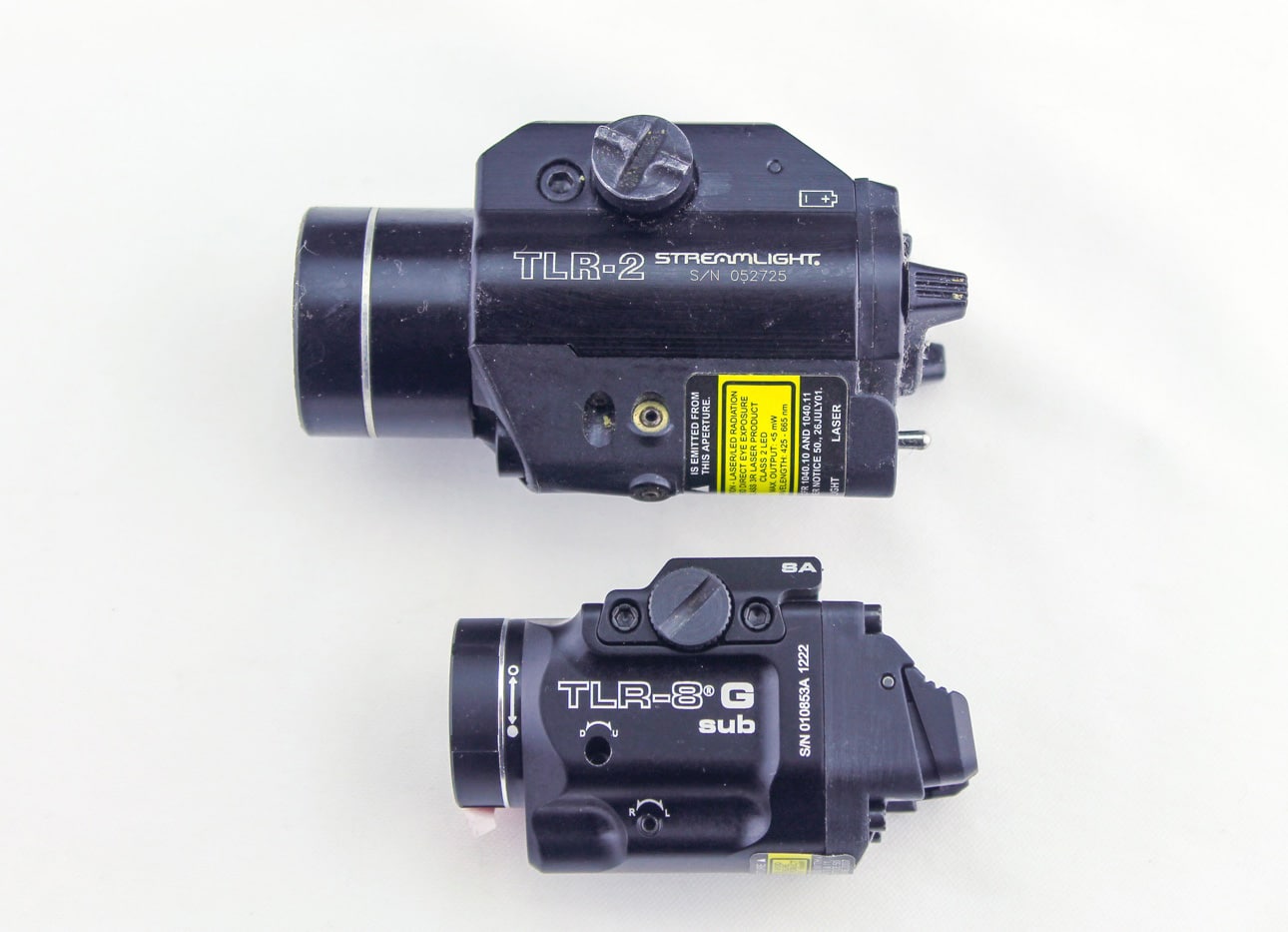
With a stated rating of 500 lumens, this unit is much brighter (and much smaller) than my older generation Streamlight TLR-2. It has a stated run time of 1.5 hours with its single CR123A battery.
Hands-On
Operation of the TLR-8 G-Sub takes a little practice to master, but gives you a lot of options. A quick press on the activating lever locks on the light beam and the laser, while the maintaining pressure on that lever creates a “dead man’s switch” effect that turns off both when thumb pressure ceases. The ambidextrous lever can be activated with either forward push or downward press.
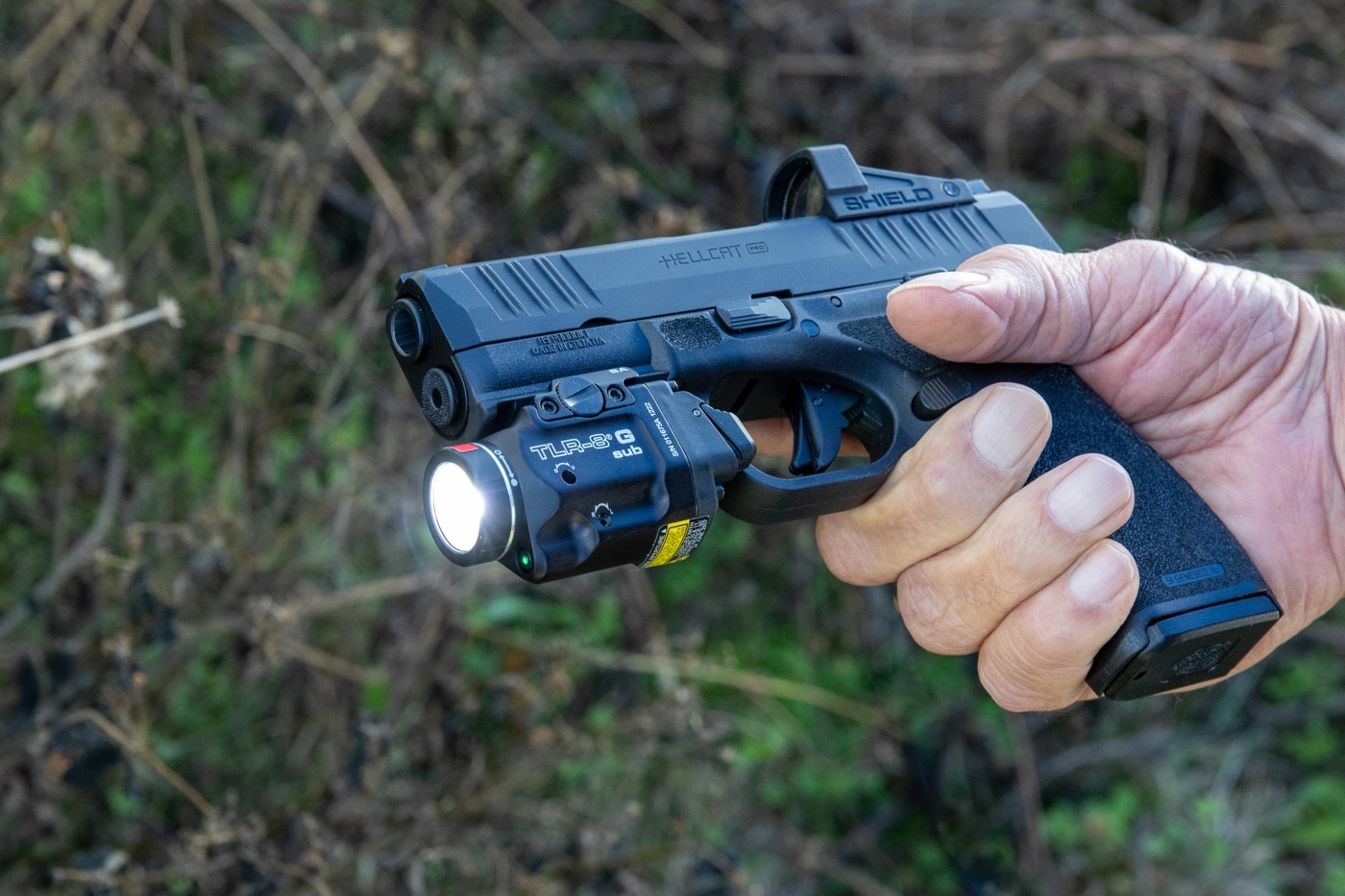
On our test sample, I found that the lever was small enough that if the thumb was riding the lever trying to hold it down, it would occasionally slip off during rapid fire recoil, interrupting the light beam and the aiming laser.
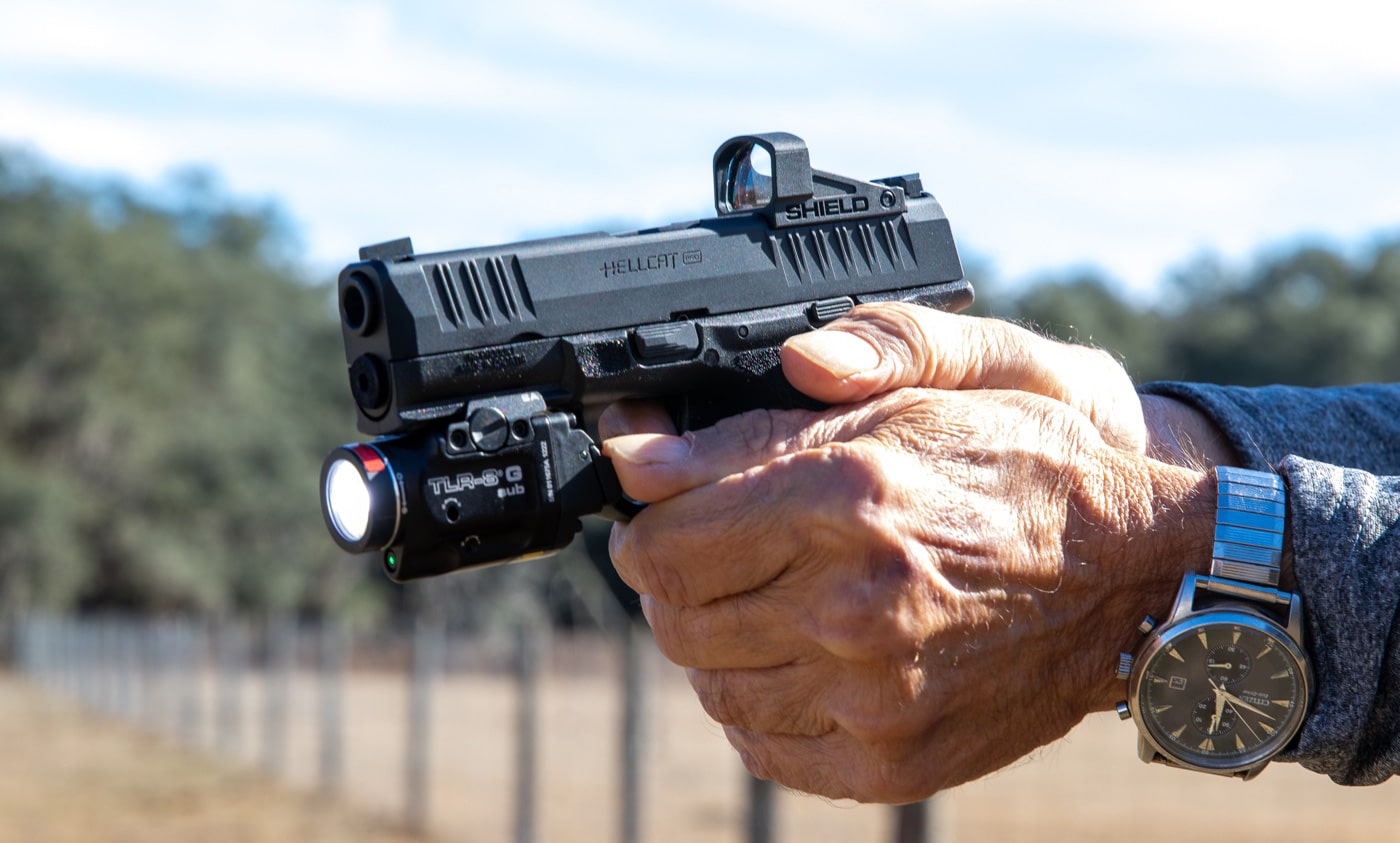
In my testing, this did not happen if I activated the “on only when applying pressure” feature by pushing it forward with the support hand thumb, instead of down. (With one hand only, a quick press of the ambidextrous lever with the tip of the trigger finger activates the “stay on by itself” mode.)
In the Dark …
On two consecutive dark nights (I’ll explain the second night in a bit), I took the Hellcat Pro and TLR-8 combo to the range. In both cases, the testing was done from a Caldwell Matrix rest on a concrete bench, from 25 yards, on cloudy and moonless nights with the excellent beam of the TLR-8 the only source of illumination. In ambient light, such as it was, I literally wouldn’t have been able to see the target, which was a buff colored IPSC silhouette with a Birchwood-Casey Shoot-N-C target stuck on.
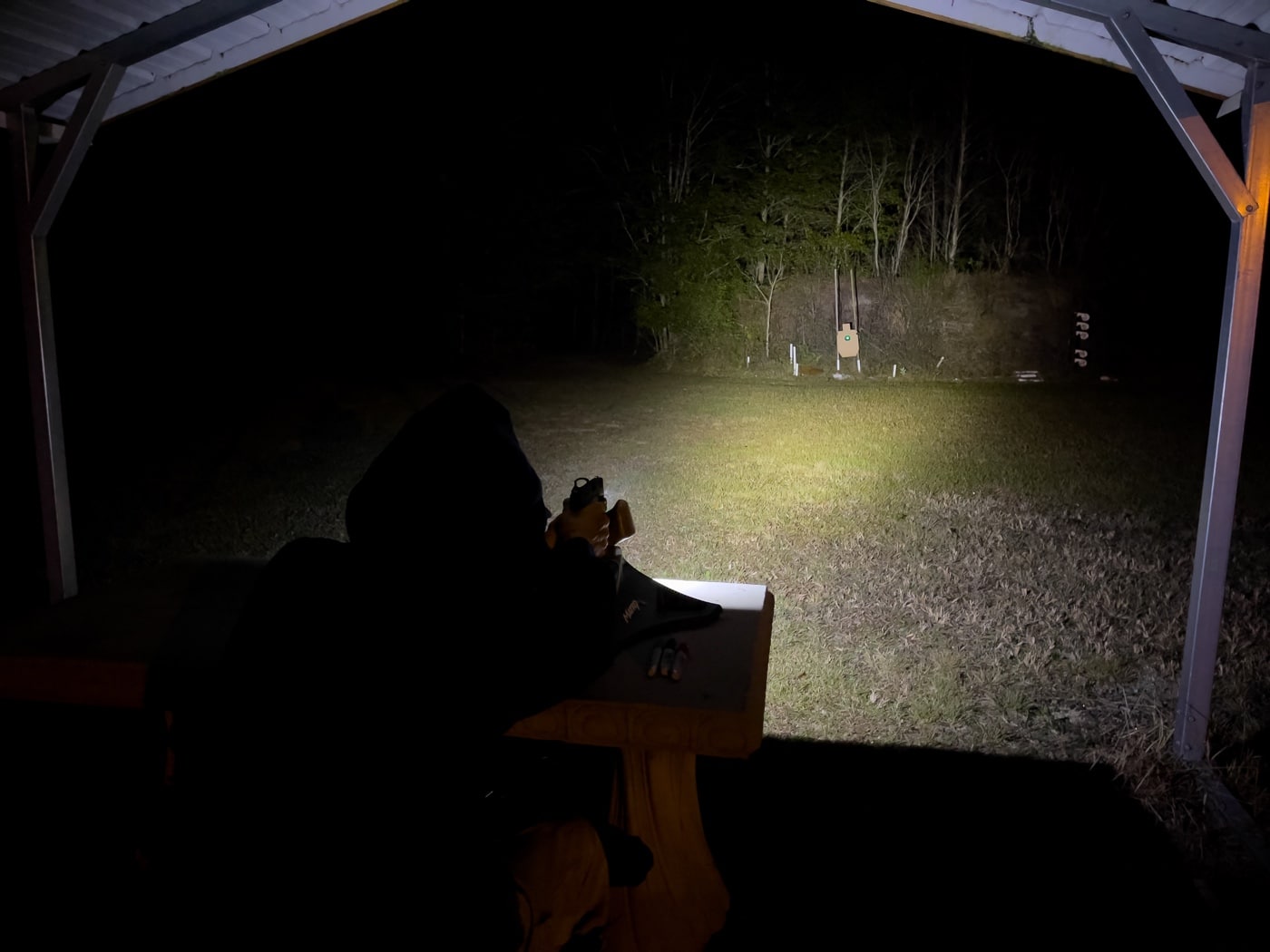
Using inexpensive Magtech 115-gr. 9mm full metal jacket, I fired five-shot groups with each of the three sighting systems: the iron sights, the red dot optic and the green laser beam of the TLR-8. It was mid-December on the range in north Florida, and more than a little windy for the first two groups.
Using the iron sights and ignoring the co-witnessed red dot as best I could, the first group measured a disappointing 9.10” in the upper torso (see photo). The best three shots, a measurement I take because under better lighting and weather conditions I’ve found it to roughly duplicate what the same gun and load will do for all five from the machine rest to which most of our readers don’t have access, was a more reassuring 2.80”.
The second group was fired using the red dot of the optic as the aiming index. This resulted in a 3.50” group (I measure to the nearest 0.05”) for all five shots, and a 2.55” “best three” cluster.
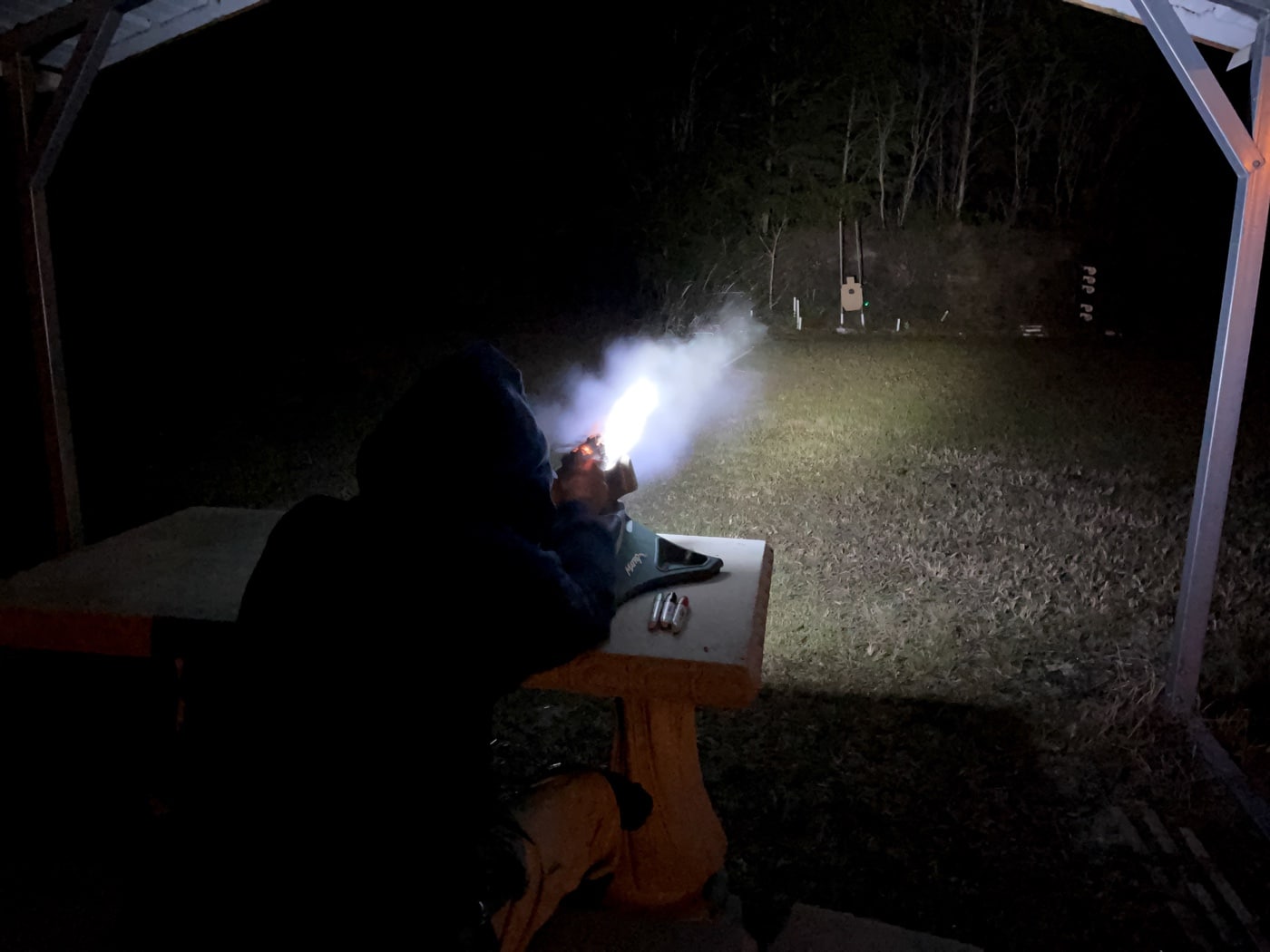
Testing was halted then for reasons which, as I said earlier, we’ll address momentarily. I finally got to bench the Hellcat Pro/TLR-8 combo for the laser aiming element of the test on Christmas night, during the infamous cold snap that hit so much of America during that period, and was grateful to be in Dixieland where it was only 32 degrees and wouldn’t hit 22 degrees until later that night.
No one was more surprised than me when, aiming with the green laser dot projected by the TLR-8, I achieved the best group of the test from the same rest with the same ammunition. This group measured 3.35” for all five shots with the best three in a pleasing 1.20”.
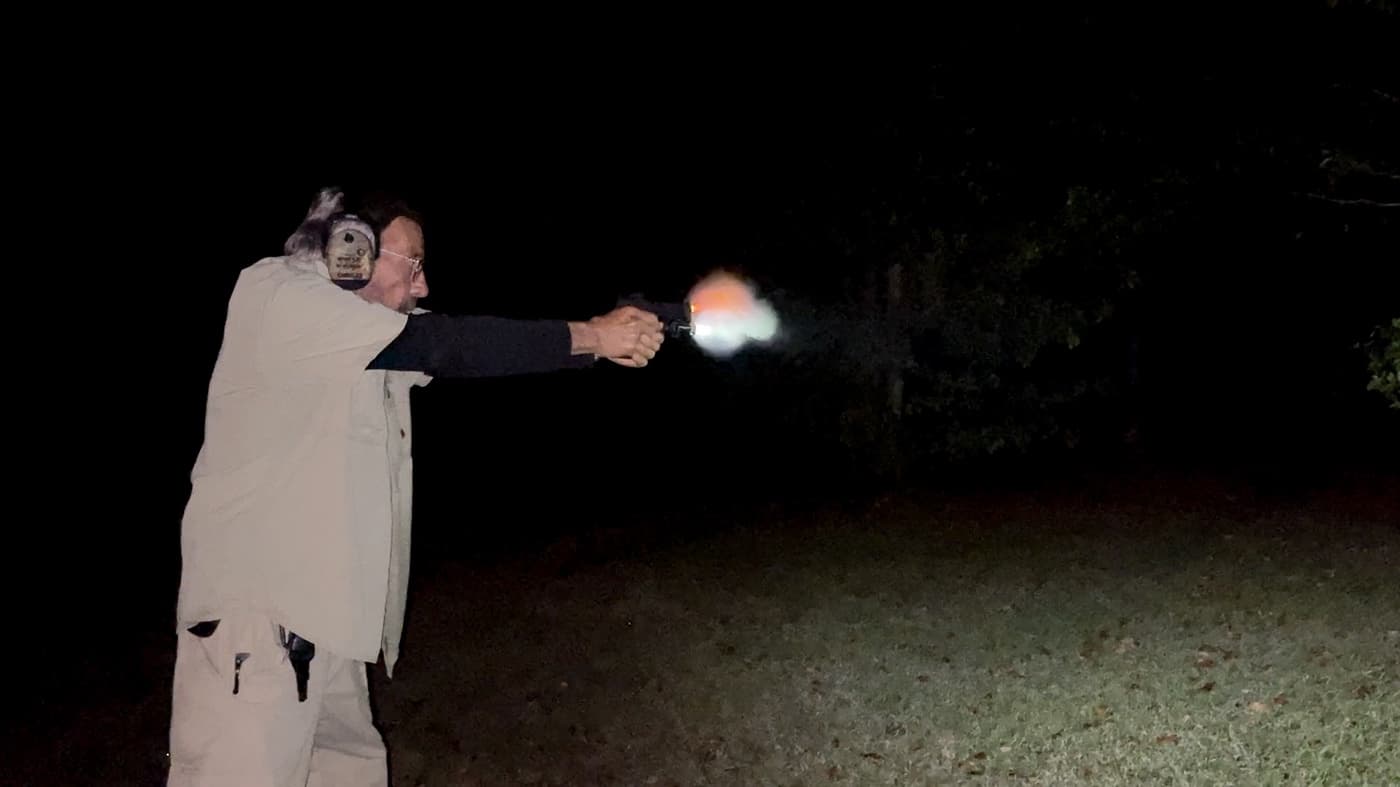
I can absolutely assure you that from 25 yards away in otherwise total darkness, this old fart wouldn’t have come anywhere close to any of that without the TLR-8 on the pistol.
Addressing the Impact
Why two separate nights of testing? Because on the first night, our first TLR-8 test unit sent its beam way low left of the point of impact, and we couldn’t adjust it. An email to Streamlight’s customer service got a quick response. I learned that my test sample was apparently one of the very few early ones that got out of the factory with improper adjustment screws. In less than a week, they had a completely new TLR-8 unit back to me, and that was the one we used for the laser beam element of the testing.
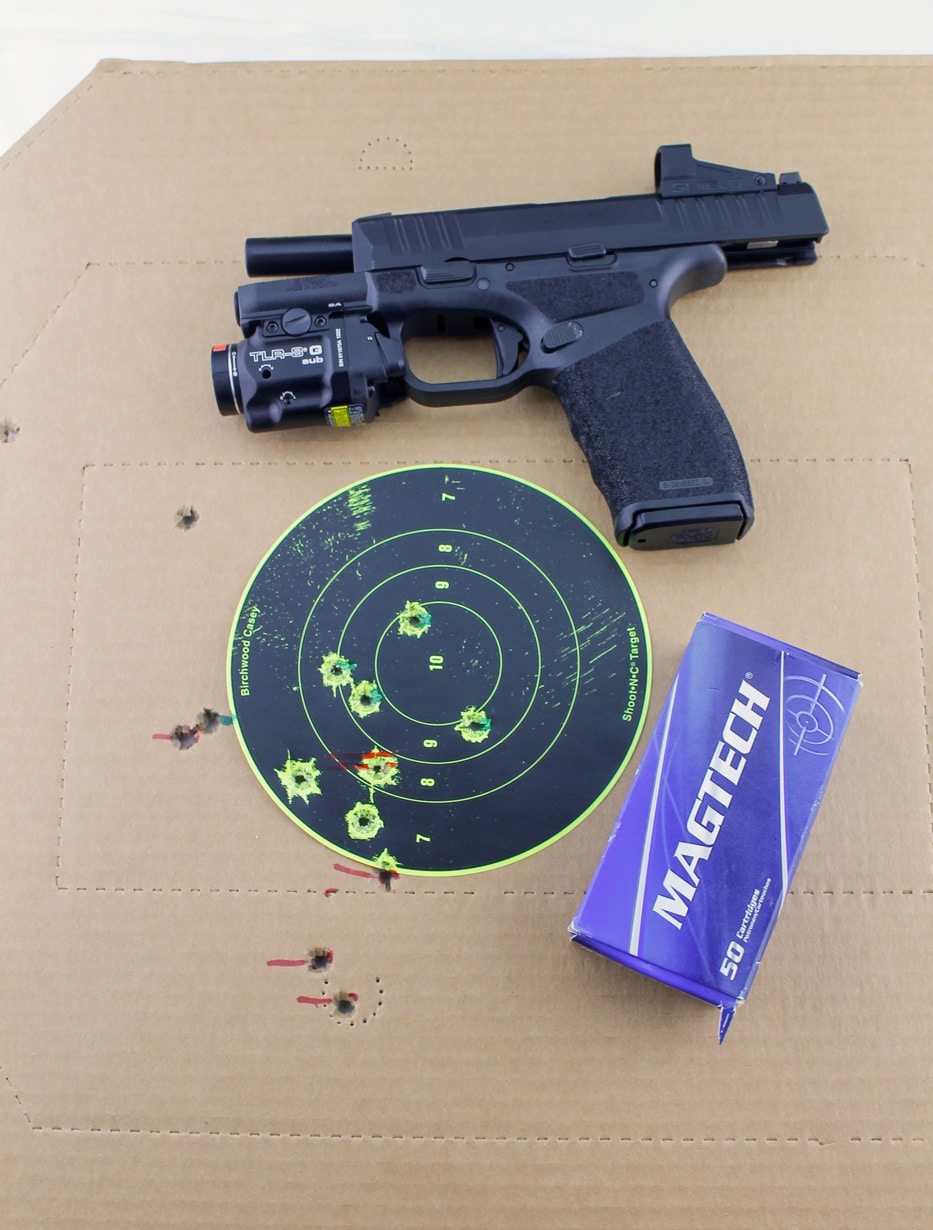
I have dealt with so many companies over the decades who say “Our product is perfect, and any problem is the customer’s fault”, that I have to give Streamlight’s customer service department a big thumbs up for the way they handled this.
The owner’s manual for this device reads, “For a laser mounted below or to the side of the bore, there is only one distance where the bullet path will coincide with the laser sight line. This point is the ‘zero range.’ Laser adjustment and the muzzle velocity of the bullet determine where this point occurs. The user must decide how high above or below the sight line the bullet can be allowed to strike and adjust the sight accordingly. At distances less than the zero range the bullet will be above the sight line. Beyond the zero range, the bullet will be below the sight line. If mounted to the side, the bullet will also deviate to the side of the laser line, as well as up and down. In practice, a TLR on a handgun can be adjusted to keep the bullet strike within about 2” high and 2” low out to about 100 feet.”
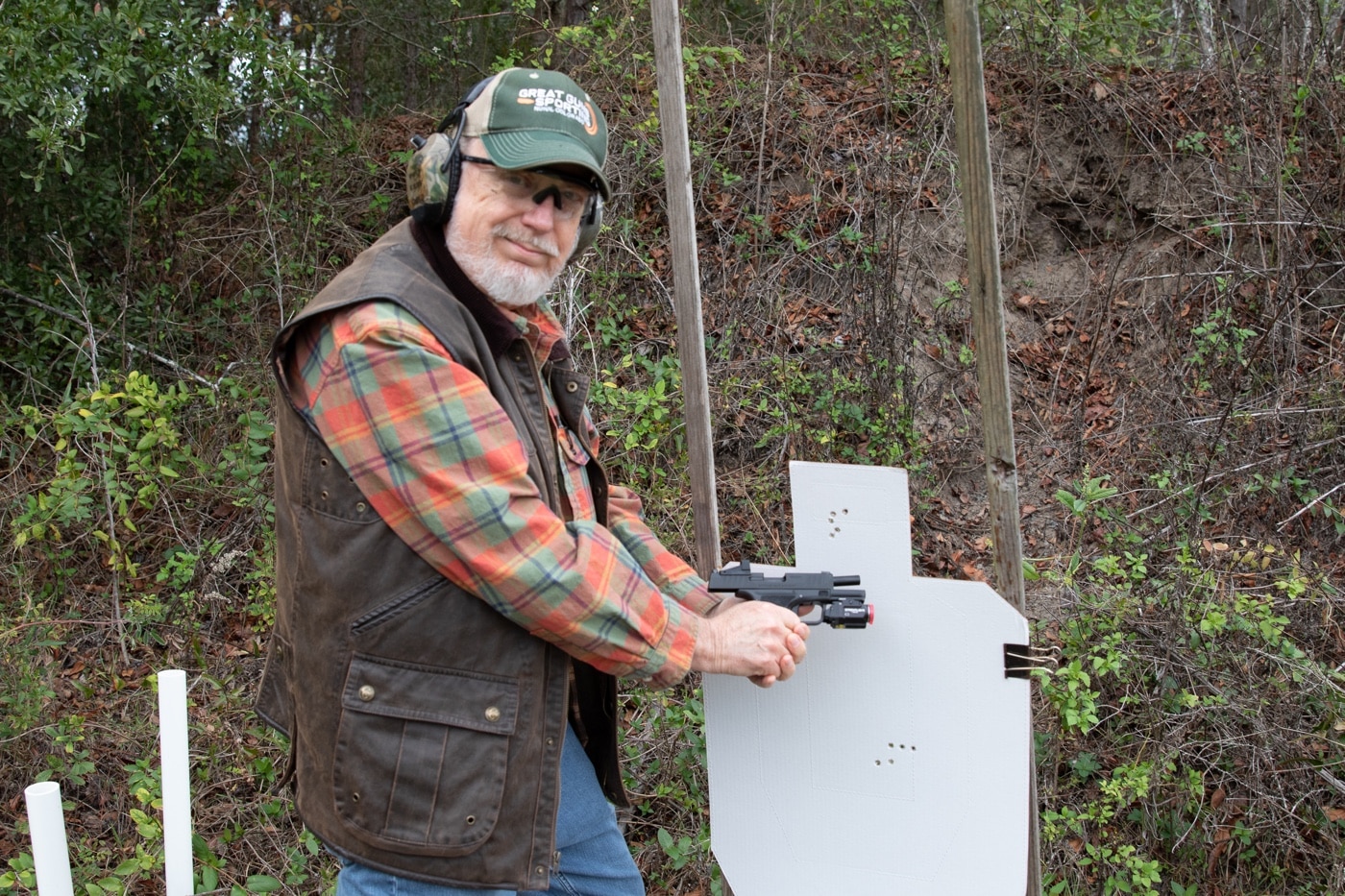
Personally, I’ve found it easier to simply sight the laser parallel to the line of the bore. In this case, the laser emitter is a little more than 2” under the centerline of the bore. With a 6 o’clock hold — that is, the laser aimed a couple of inches below the intended point of impact — at reasonable distances you know the shot is going to hit about that much above the green dot.
Conclusion
The “G” configuration is, in my opinion, absolutely worth its extra cost over the red beam of the also available standard TLR-8 Sub. Its green dot seems to show up really well, daylight or dark, at greater distances than the red.
My biggest complaint was actually the tiny owner’s manual with its tiny print. Rather than look for a magnifying glass, get on your computer and go here. If your eyes are as old as mine, expand it to 250% size.
MSRP is $477, and I have found that they are generally retailing in the $275-$300 range. Yes, the TLR-8 G-Sub ain’t cheap, but for all the features it brings to the table, I think it’s well worth the money.
Editor’s Note: Please be sure to check out The Armory Life Forum, where you can comment about our daily articles, as well as just talk guns and gear. Click the “Go To Forum Thread” link below to jump in!
Join the Discussion
Featured in this article
Continue Reading
Did you enjoy this article?

 65
65




